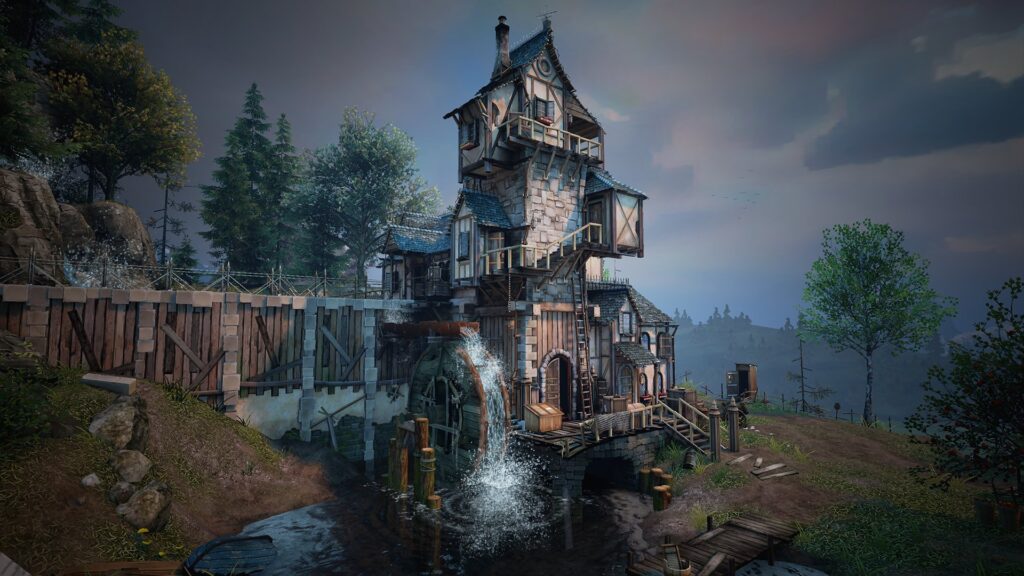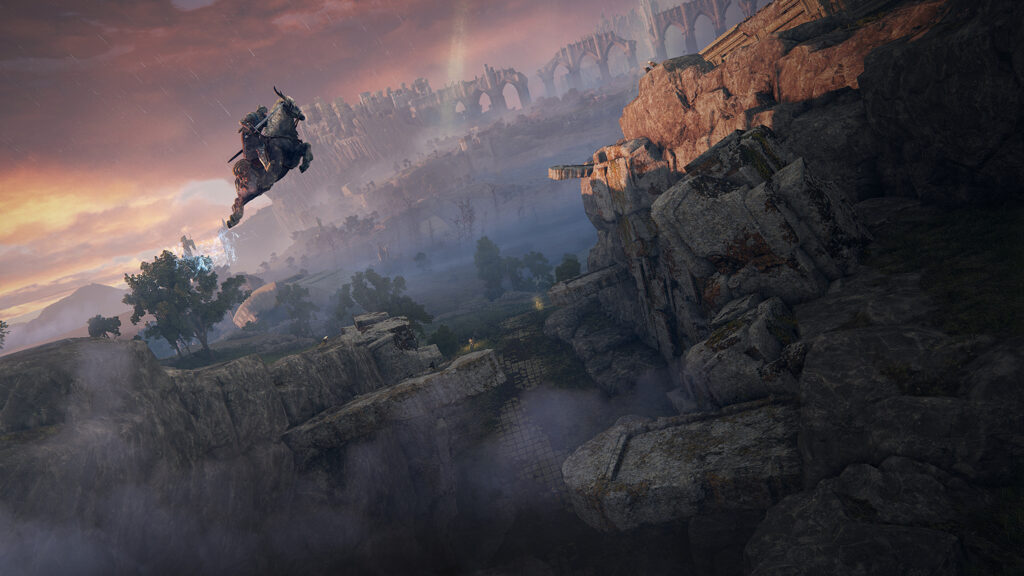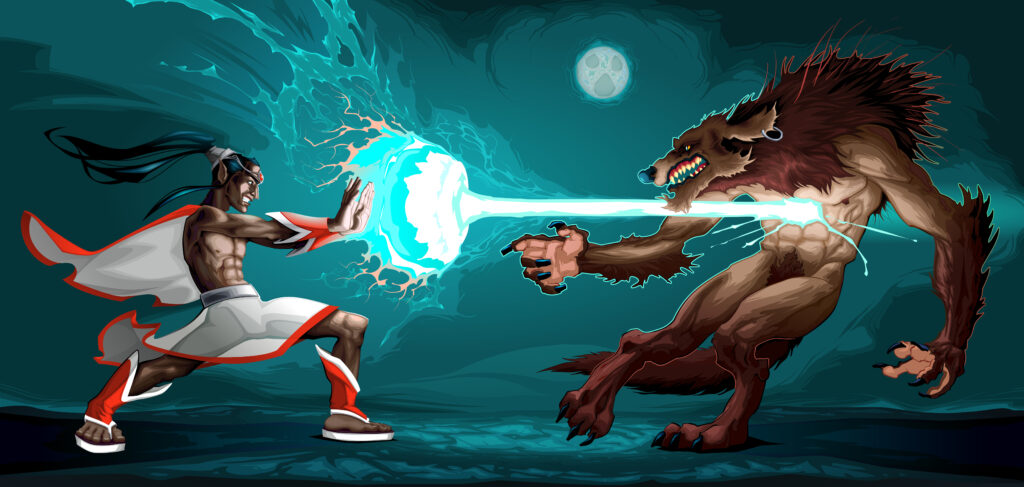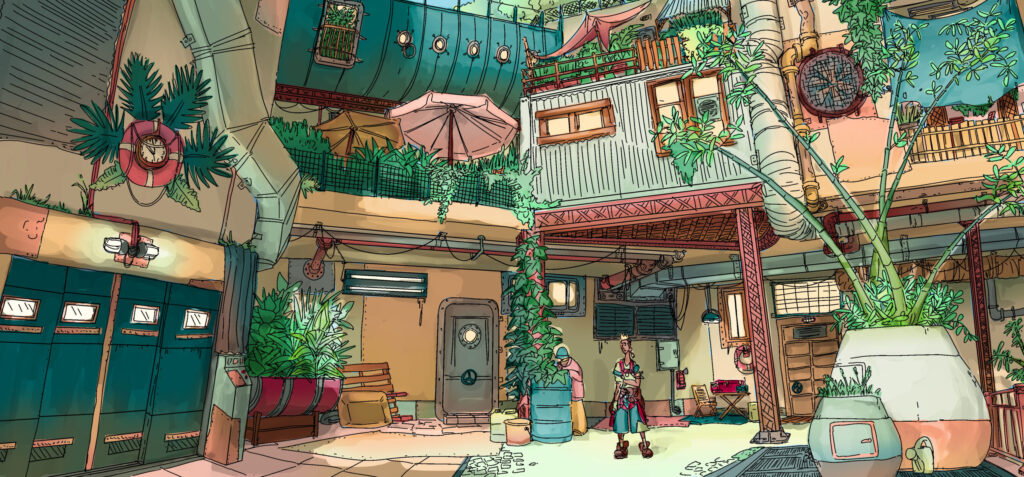In the realm of gaming, where players seek immersion and escapism, the game environment design plays a pivotal role. From sprawling landscapes to intricate interiors, game environment design is the bedrock upon which memorable gaming experiences are built.
In this article, we delve deep into the art and science of crafting immersive game environments. Whether you’re a budding game developer or a seasoned veteran looking to refine your skills, join us as we unlock the secrets behind creating captivating virtual worlds!
Don’t miss: Advertising in video games – Types and benefits
Understanding the fundamentals of game environment design
At its core, game environment design encompasses the creation of virtual spaces that evoke emotion, foster engagement, and enhance gameplay. It involves a multidisciplinary approach, drawing from elements of architecture, art, storytelling, and psychology. To excel in this field, one must grasp the fundamental principles that underpin effective environmental design.

The keyword “game environment design” is not only the focus of our discussion but also a cornerstone in optimizing your content for search engine visibility. By strategically integrating this keyword throughout your article, you can enhance its discoverability and attract a broader audience of enthusiasts and professionals alike.
Immersion through visual storytelling
Game environment design serves as the canvas upon which digital worlds come to life, offering players immersive experiences that transcend the boundaries of reality. At its essence, game environment design encompasses the creation of virtual spaces that serve as the backdrop for gameplay, weaving together elements of art, architecture, storytelling, and technology to craft compelling interactive experiences.
Central to game environment design is the concept of immersion – the ability to transport players to alternate realities where they can suspend disbelief and become fully engrossed in the virtual landscape. Achieving this level of immersion requires careful attention to detail and a deep understanding of how various design elements work together to evoke emotion and engage the senses.
One of the fundamental principles of game environment design is visual storytelling. Just as a picture can speak a thousand words, the visual elements of a game environment can convey narrative depth and context, enriching the player’s experience and deepening their connection to the game world. From the architectural style of buildings to the placement of props and scenery, every aspect of the environment should contribute to the overarching story and thematic elements of the game.
In addition to visual storytelling, game environment design also encompasses the creation of dynamic and interactive spaces that respond to player actions and movements. This includes everything from designing obstacle courses and puzzles to implementing weather systems and day-night cycles. By incorporating interactive elements into the environment, designers can foster a sense of agency and exploration, empowering players to shape their own experiences within the game world.
Sound also plays a crucial role in game environment design, helping to establish mood, atmosphere, and spatial awareness. From the ambient noise of bustling city streets to the melodic soundtrack of a tranquil forest, audio elements can evoke emotion and enhance immersion, drawing players deeper into the game world.
By carefully crafting soundscapes that complement the visual elements of the environment, designers can create a truly multisensory experience that resonates with players on a profound level.

Ultimately, game environment design is about creating worlds that captivate the imagination and provide a platform for meaningful interactive experiences. Whether it’s exploring ancient ruins, navigating futuristic cityscapes, or surviving in a post-apocalyptic wasteland, the environments crafted by game designers have the power to transport players to places they’ve never dreamed possible.
With each innovation and technological advancement, the boundaries of game environment design continue to expand, offering endless possibilities for creativity and exploration in the world of gaming.
Balancing aesthetics and functionality
While aesthetics are paramount in game environment design, they must be harmoniously balanced with functionality to ensure a seamless gameplay experience. A visually stunning environment loses its allure if it hampers player navigation or impedes gameplay mechanics. As such, designers must strike a delicate equilibrium between form and function, prioritizing usability without sacrificing artistic vision.
Optimizing your game environment for both aesthetics and functionality requires careful consideration of scale, layout, and interactive elements. Seamless integration of these elements not only enhances player immersion but also fosters a sense of agency and exploration. By iteratively testing and refining your designs, you can identify potential bottlenecks or usability issues early in the development process, ensuring a polished and cohesive final product.
Harnessing the power of soundscapes
In the realm of game environment design, sound plays a pivotal role in shaping the player’s perception and emotional engagement. From ambient noise to dynamic sound effects, audio elements enrich the sensory experience, breathing life into virtual worlds and heightening immersion. By harnessing the power of soundscapes, designers can evoke mood, evoke atmosphere, and elevate gameplay to new heights.

When crafting soundscapes for your game environments, consider the environmental context and narrative tone. Whether it’s the rustle of leaves in a tranquil forest or the distant hum of machinery in a futuristic cityscape, each sound should reinforce the player’s sense of place and narrative immersion. Through spatial audio techniques and dynamic mixing, designers can imbue environments with a sense of depth and realism, further enhancing the player’s sensory experience.
The evolution of game environment design
As technology continues to advance and player expectations evolve, so too does the landscape of game environment design. From the pixelated landscapes of early arcade games to the photorealistic vistas of modern AAA titles, the evolution of game environments reflects both technological progress and creative innovation.
In an era of increasingly sophisticated hardware and software tools, designers are afforded unprecedented freedom to push the boundaries of imagination and create truly immersive worlds.
Yet, with this freedom comes the challenge of balancing complexity with accessibility, and realism with stylization. As game environments grow in scale and intricacy, designers must navigate a myriad of technical and creative considerations, from performance optimization to artistic cohesion. By staying abreast of emerging trends and best practices, designers can adapt their workflows and embrace new tools and techniques to stay ahead of the curve.
The artistry of game environment design
Game environment design is a multifaceted discipline that requires equal parts creativity, technical proficiency, and attention to detail. From the meticulous crafting of visual landscapes to the orchestration of immersive soundscapes, every element plays a crucial role in shaping the player’s experience and fostering a sense of immersion.
By understanding the fundamental principles of environmental design and staying abreast of industry trends, designers can unlock the secrets to creating truly captivating virtual worlds. So, whether you’re embarking on your first foray into game development or honing your skills as a seasoned professional, remember that the journey to crafting unforgettable game environments begins with a single step—and the keyword “game environment design” is your guide along the way.

Craft your dream game environment with Main Leaf!
Leave the technical complexities behind and envision the immersive world you’ve always dreamed of creating. With Main Leaf as your trusted partner, transforming your vision into reality has never been more attainable. Our team of skilled developers, artists, and designers is equipped with the expertise, tools, and dedication needed to bring your game environment to life!
From initial concept to final launch, whether your game is destined for console, mobile, or PC platforms, we’re committed to surpassing expectations among gamers globally. Contact us today to start your journey!

